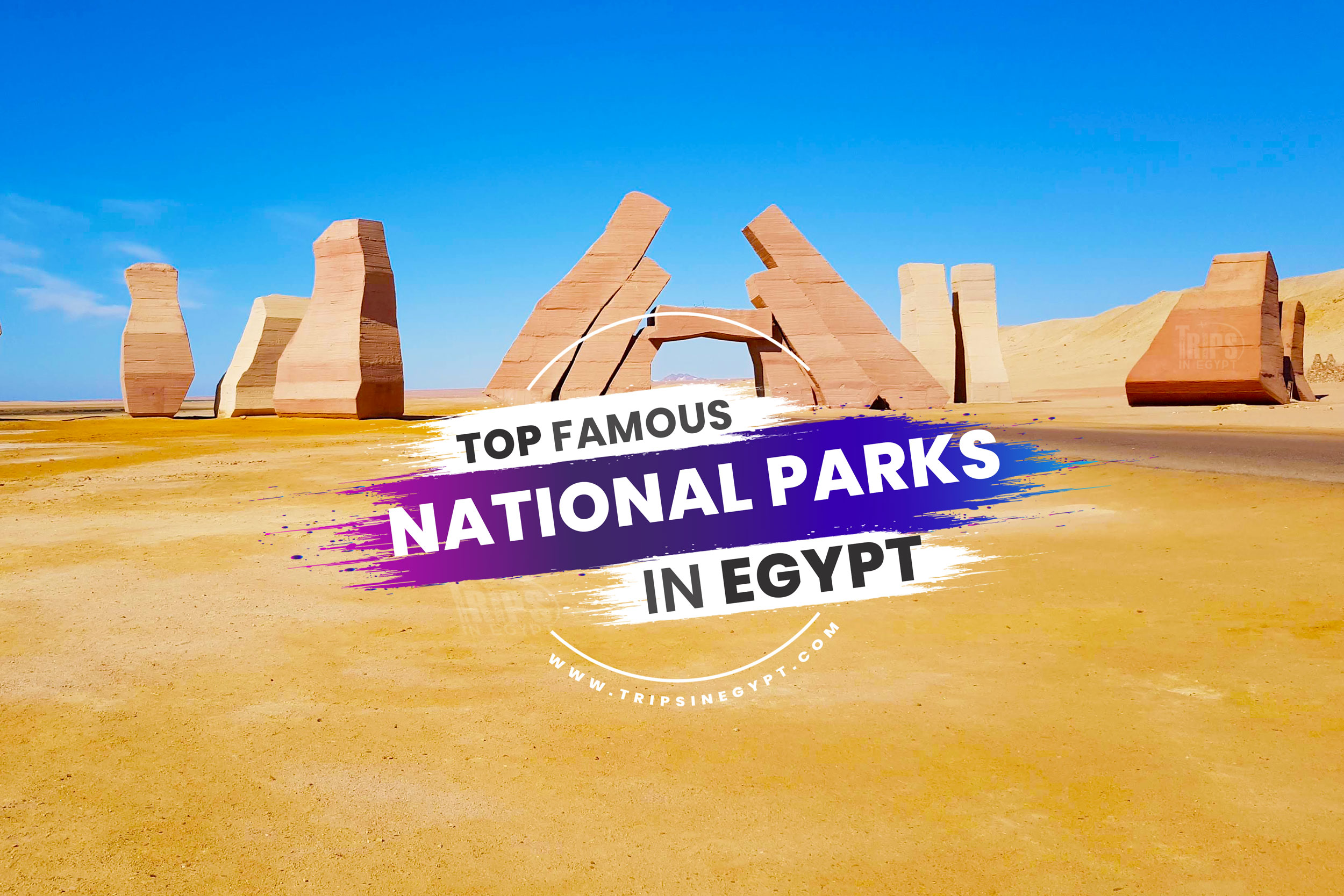
Famous National Parks & Natural Reserves in Egypt
The National parks in Egypt are hidden pieces of heaven filled with the most heavenly collection of natural wonders located across the lands and waters of Egypt. Within the blessed geographical location of Egypt that stretches across north Africa and western Asia are a number of magical creations with high biodiversity. There are up to 28 natural protectorates which represent about 12% of the entire land of Egypt and hold different geological borders, coastal elements, and natural blessings. All these natural parks are able to show the natural heritage of this immortal civilization.
All the natural parks are surrounded by beautiful climates and are famous for containing a number of diversified rich species of fauna and flora which can be only discovered in Egypt. Through exploring all these magical natural reserves, everyone will discover the heavenly wealth and heritage of some of the most marvelous locations on the face of the earth. In this article, we will explore all the facts and details about all the miraculous natural national parks of Egypt. Here are the top 24 National parks & protected areas in Egypt:

1. Ras Muhammad National Park
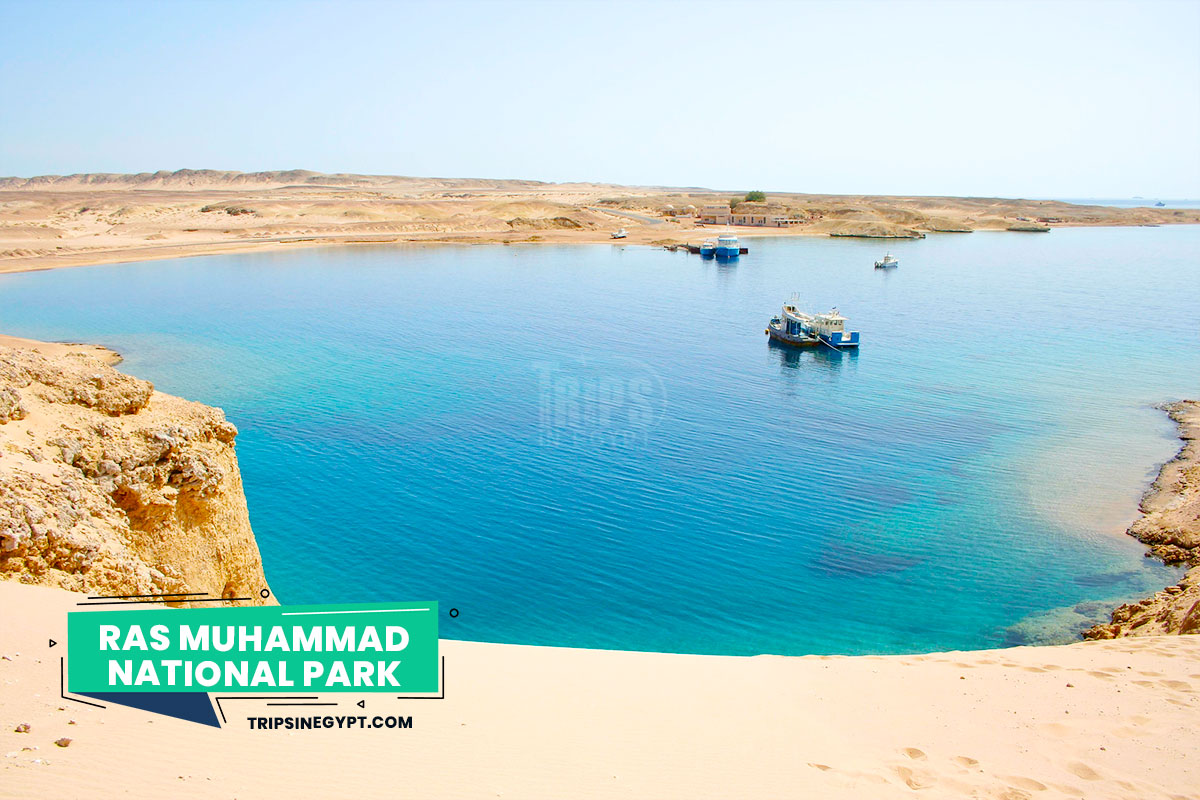
Ras Muhammed National Park is a magical natural attraction that is found at the southern climax of the Sinai peninsula. The national park has a massive area of about 185 square miles (480 sq km) overlooking the eastern side of Aqaba gulf and the western side of the Suez gulf plus it is just 12 km from the city of Sharm El Sheikh. 133 square miles (345 sq km) of the national park of Ras Muhammad is a complete marine area that offers protection to the Red Sea Reef. The average temperature of the national park is about 23 °C (73 °F).
The Egyptian Environmental Affairs Agency (EEAA) 1983 classified the area as a marine reserve that protects all the terrestrial wildlife and marine gems. The park has a marvelous mangrove forest which is found at the far end of the Sinia peninsula. The park is truly blessed as it has a number of wadis, sand dunes, mountains, and coastal mud plains. It holds incredible amazing reef types of up to 220 different species.
There are also a number of epic thousand fish species, 150 species of crustaceans, 40 species of starfish, and 25 species of sea urchins. One of the most famous creatures found in the waters of the national park is the green turtle and the hawksbill turtle. It is a great popular attraction between hikers, divers, and snorkelers plus everyone who wishes to have the most thrilling adventure.

2. Zaranik Protected Area
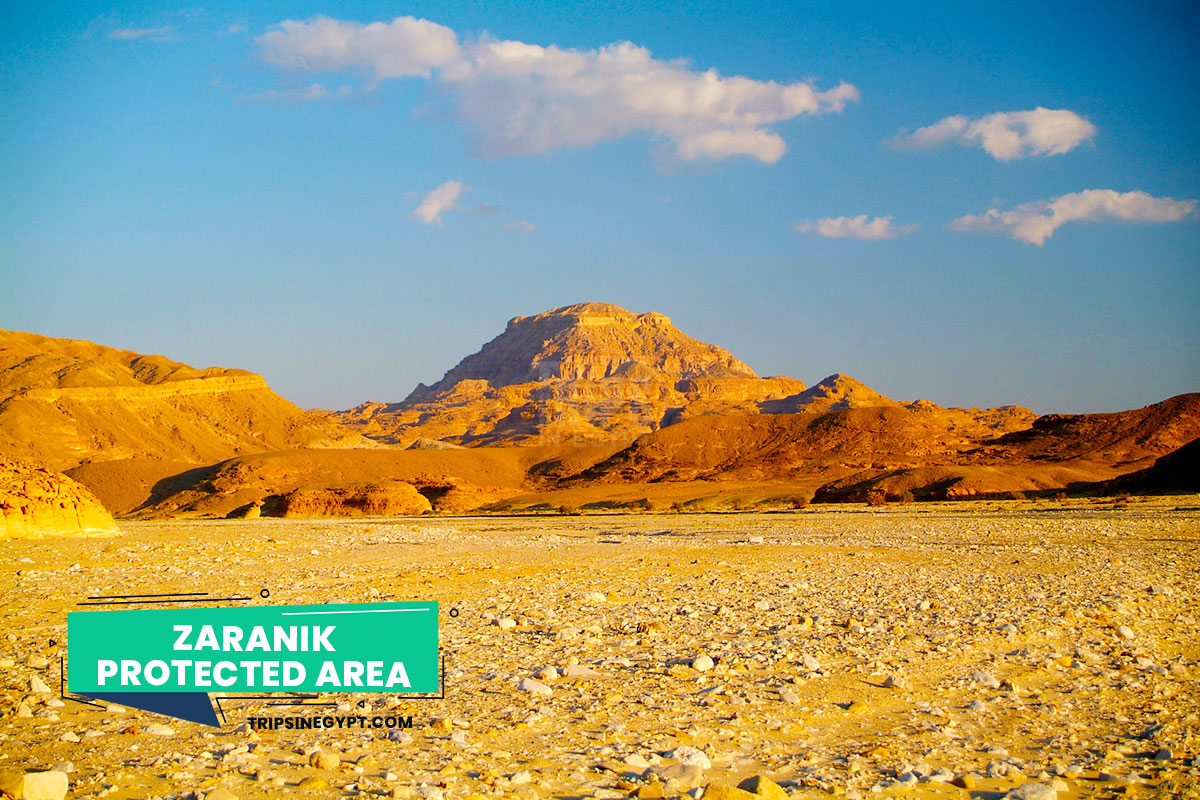
Zaranik Protected Area is a marvelous natural habitat located on the final eastern tip of lake bradawl across the Mediterranean coast of Sinia. It is on the southern part of Qantara El Arish road plus it is just 300 km from Cairo. It has an area of about 250 Km2 which is composed of 68% water surface and 32% sand dunes plus the altitude is about 15 m above water sea level.
It was recognized as a preserved area in 1985 as a center for migratory birds. The entire area has about 17 species of flora across the area and foreshore which include Strobilaceum, Halocnemon, Juncus Subulatus, Arthrocnemon Glaucum, Zygophyllom Album, Stipagrostis Scoparia, Nitraria Retusa, and Ruppia. There are 244 species of birds that were reported at Bardaweel lagoon plus 18 species of a reptile of turtles.

3. Al Ahrash Reserve
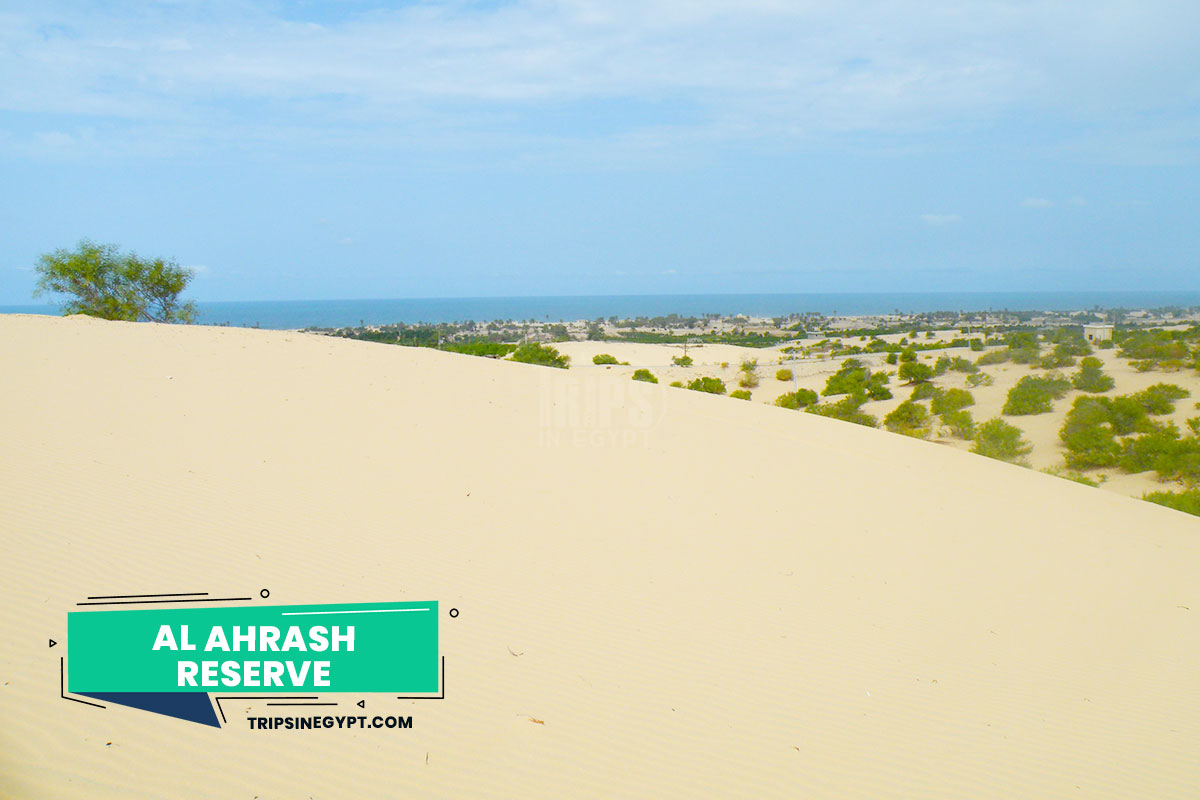
Al Ahrash Reserve is a magical wonder of natural beauty located in the northern part of Egypt which protects a massive area of sand dunes that is 60m high sea level. This magnificent wonder is extremely dense with countless acacia and camphor trees plus there are a number of pastoral plants, and bushes.
This reserve plays a vital role in protecting some elements of the ecology of the Mediterranean sea coast from any modern development processes. Due to the high concentration of plants, there is a high existence of fresh water in the soil. It is a very popular attraction among tourists which possesses the most marvelous and highly preserves plants and enchanting water resources.

4. El Omayed Reserve
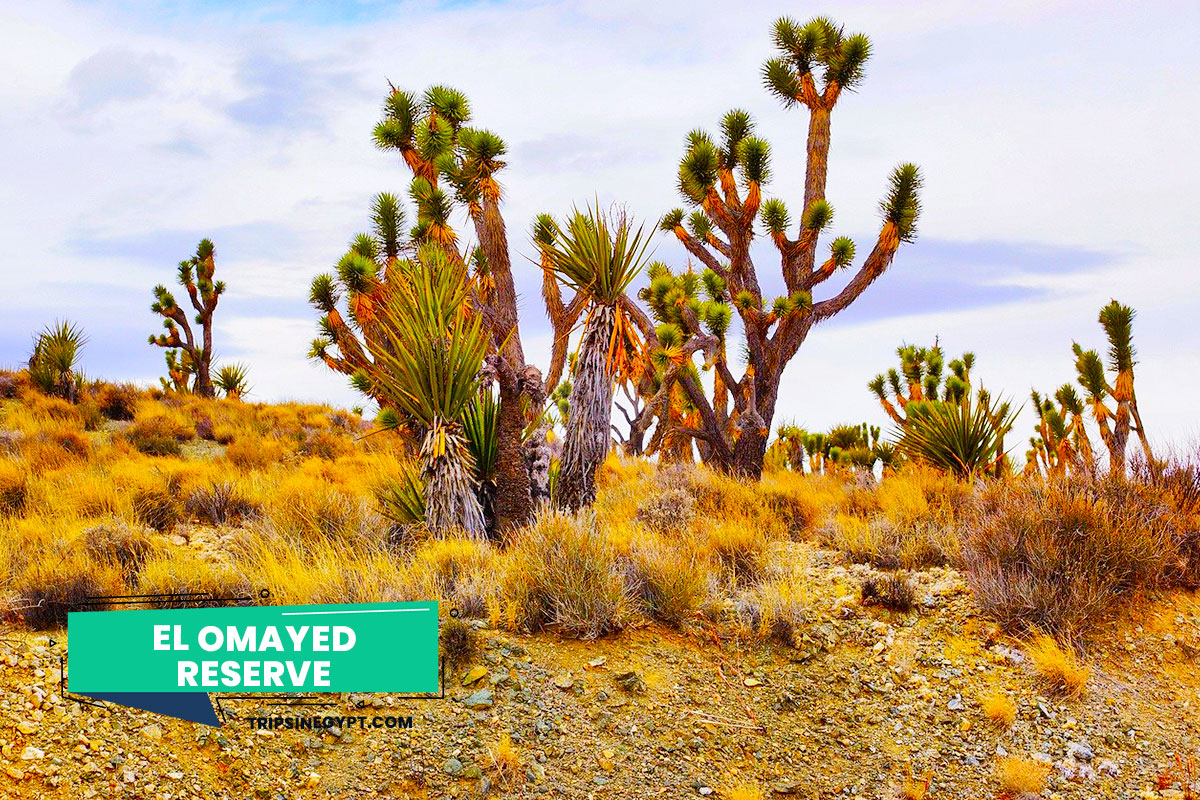
Omayed Reserve is an amazing wonder of 75800 ha of land that became a UNESCO Biosphere reserve in 1981 that extended all the way to 1998 which is found in western Egypt. This coastal piece of desert is located 80 km in the western part of Alexandria and 200 km in the eastern part of Matruh. The reserve is made up of 4 villages with 400 inhabitants.
It is filled with inland ridges, coastal calcareous dunes, nonsaline depressions, saline depressions, and inland plateaus. The area is home to 29 moss taxa which were recorded for the first time across the coast of the Mediterranean sea. It represents about 0.07% of the land mass of Egypt and it holds 17% of all the moss flora of Egypt.

5. Elba Protected Area
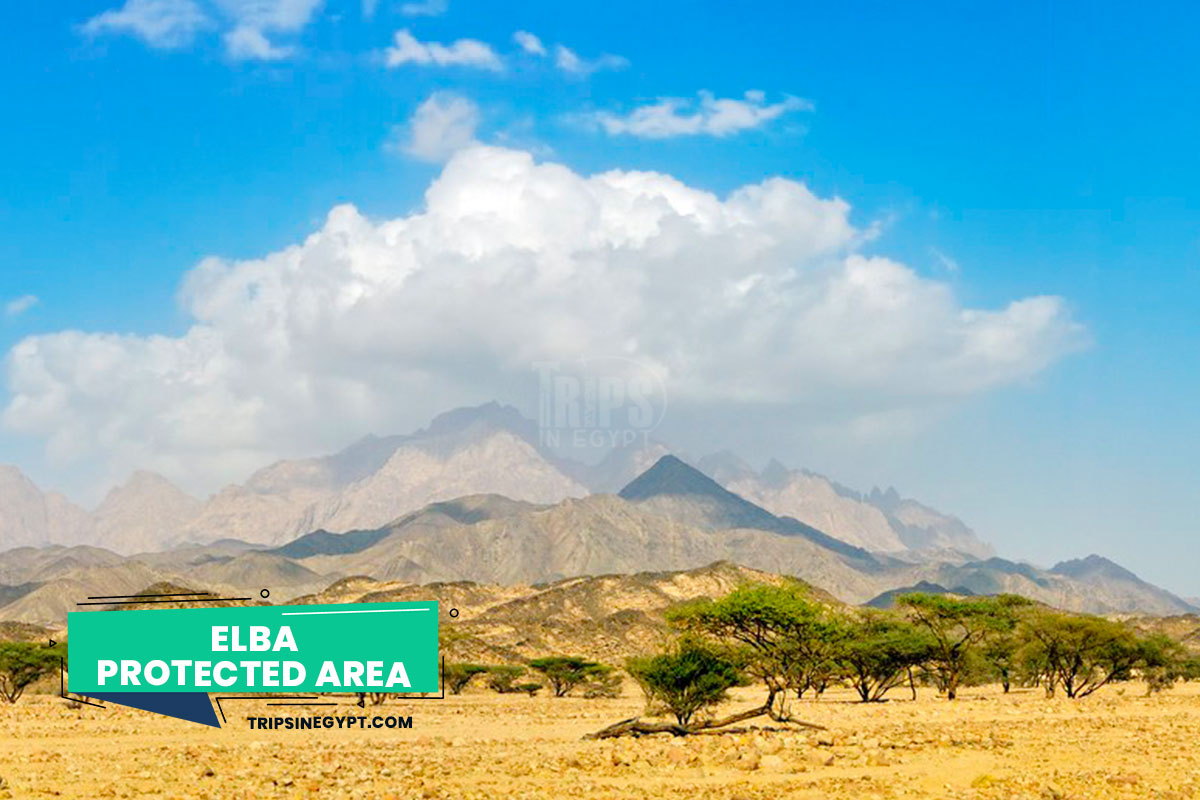
Elba Protected Area is located on the southeast corner of the eastern desert of Egypt which sits on an area of 35,600 km2. This national reserve was successful in protecting one of the richest biodiverse locations under the protection of The Egyptian Environmental Affairs Agency (EEAA). It is home to a number of blessed ecosystems that can not be found in any place in Egypt. The area covers about 3,560,000 ha (8,800,000 acres). It was declared a natural reserve in 1986 by the Egyptian government. It is home to a great mountain called Jabal Elba which rises to a height of 1437 m.
The area is home to a number of incredible mangroves of the Red Sea, coastal salt marshes, coastal sand dunes, coral reefs, coastal desert plains, and a cluster of coastal mountains which are Jabal Ebruq, Jabal Elba, and Al Daeeb. It is home to a number of 458 species of flora. At the high altitude of the mountain are Ferns, mosses, Biscutella elbensis, and succulents. At the lower altitudes of the mountain are Delonix elata, Aerva persica, Acacia tortilis, and Euphorbia cuneata. It has a rich diverse existence of fauna, 40 species of birds, 23 species of mammals, and 30 species of reptiles.

6. Wadi El Gemal National Park
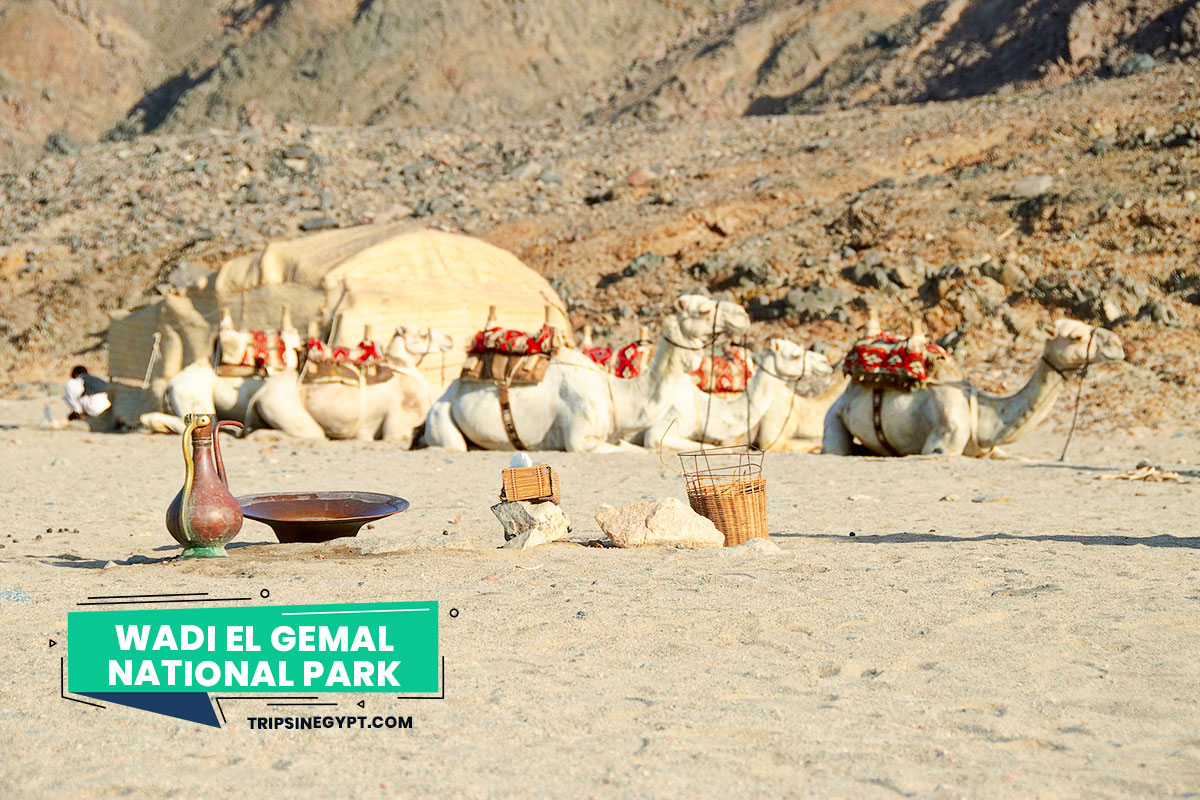
Wadi El Gemal National Park is a magically protected area in Egypt located in the eastern desert near the Red Sea coast. The park covers an area of approximately 7,450 square kilometers (2,880 sq mi) and is known for its diverse and unique ecosystems as it includes 4,770 square kilometers (1,840 sq mi) of land and 2,100 square kilometers (810 sq mi) of marine, plus desert, mountains, valleys, and coastal habitats.
It is home to a variety of flora and fauna, 450 species of coral, and over 1200 species of fish plus several species of reptiles, 13 bird species, and mammals, some of which are endemic to the region such as the Dorcas gazelle and the Nubian Ibex. The park also features several important archaeological sites dating to Ptolemaic and Roman ruins, ancient mines, and prehistorical rock art which reflects human activity in the area over thousands of years.

7. Gilf Kebir National Park
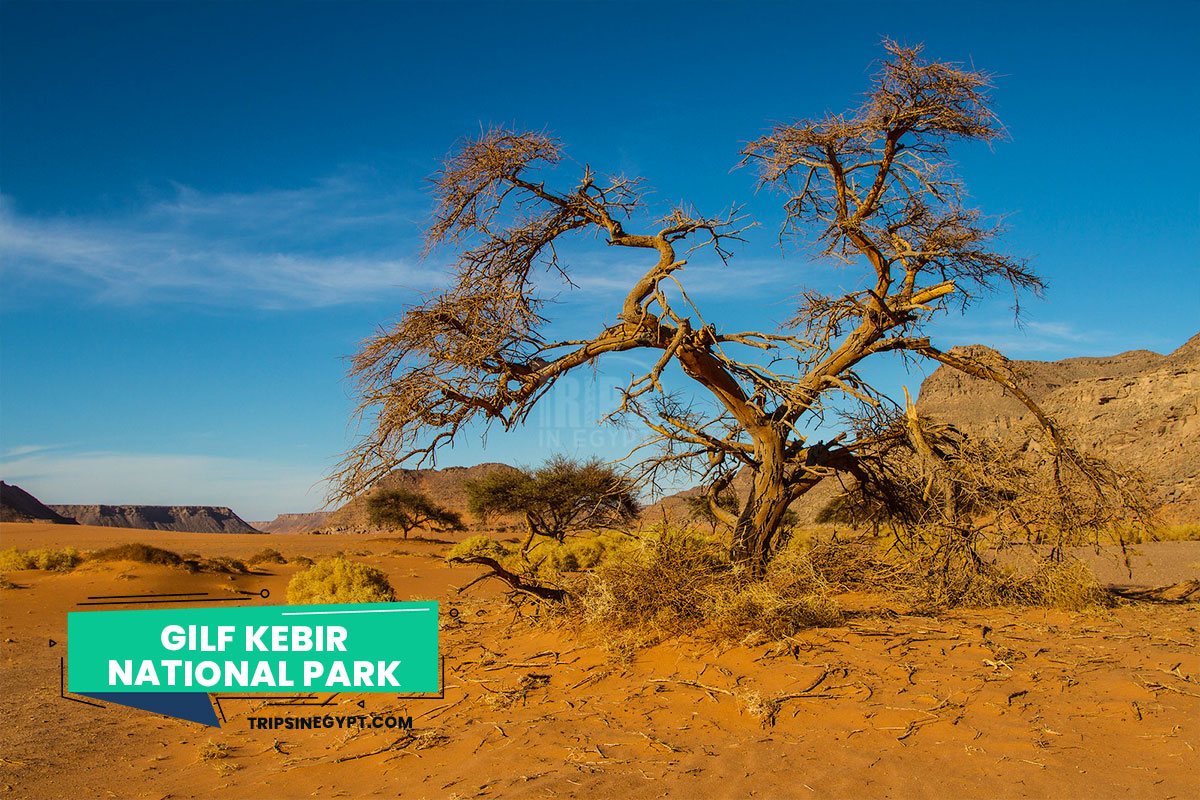
Gilf Kebir National Park is a glorious wonder which was established in 2007 across a surface of 48533 km2 which is equal to 5% of Egypt's territory. It is considered one of the most remote and pristine wilderness areas in Egypt filled with landscapes, including towering sand dunes, rugged cliffs, and canyons.
Within this national park is a silica glass area that dates back more than 30 million years ago. It is rich in cultural and historical sites that include rock art, ancient settlements, and tombs.

8. Salouga and Ghazal National Park
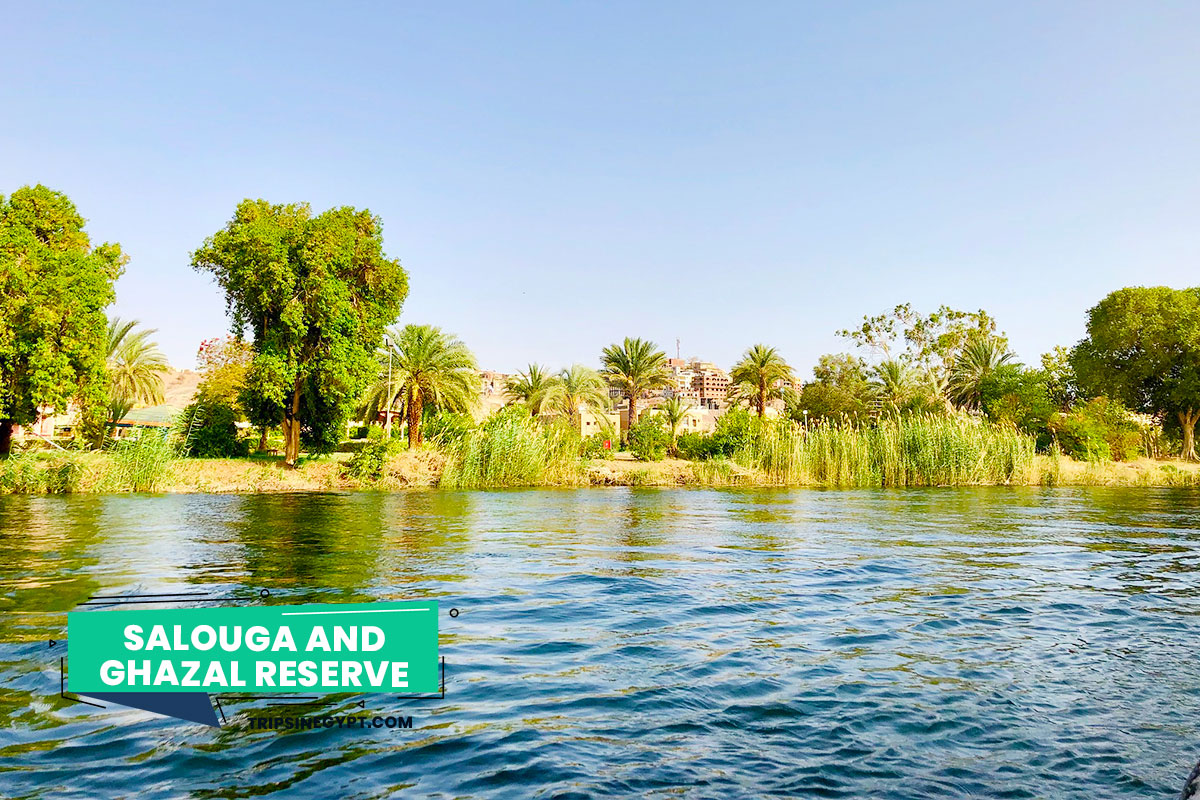
Saluga and Ghazal's protected areas are known to be the smallest natural reserve which is located in southern Egypt. The scope of the entire reserve is just 3 km north of Aswan which comes in the shape of two small island groups across the Nile River. This incredible ecosystem was declared a natural protectorate in 1986. The two islands are less than a half straight away and are covered with acacia forest. This natural reserve is covered with rich biodiversity which includes 15 species of mammals, 100 species of plants, and 135 recorded species of birds.
Saluja Island means the waterfall in the Nubian language while the title Ghazal Island refers to an ancient t plant that grows on the reserve. Most animals and birds found there include camels, wild donkeys, goats, the red fox, hyenas, and more. There are 60 rare species of migratory and resident birds and the most famous ones include the black Ibis.

9. St. Catherine’s National Park
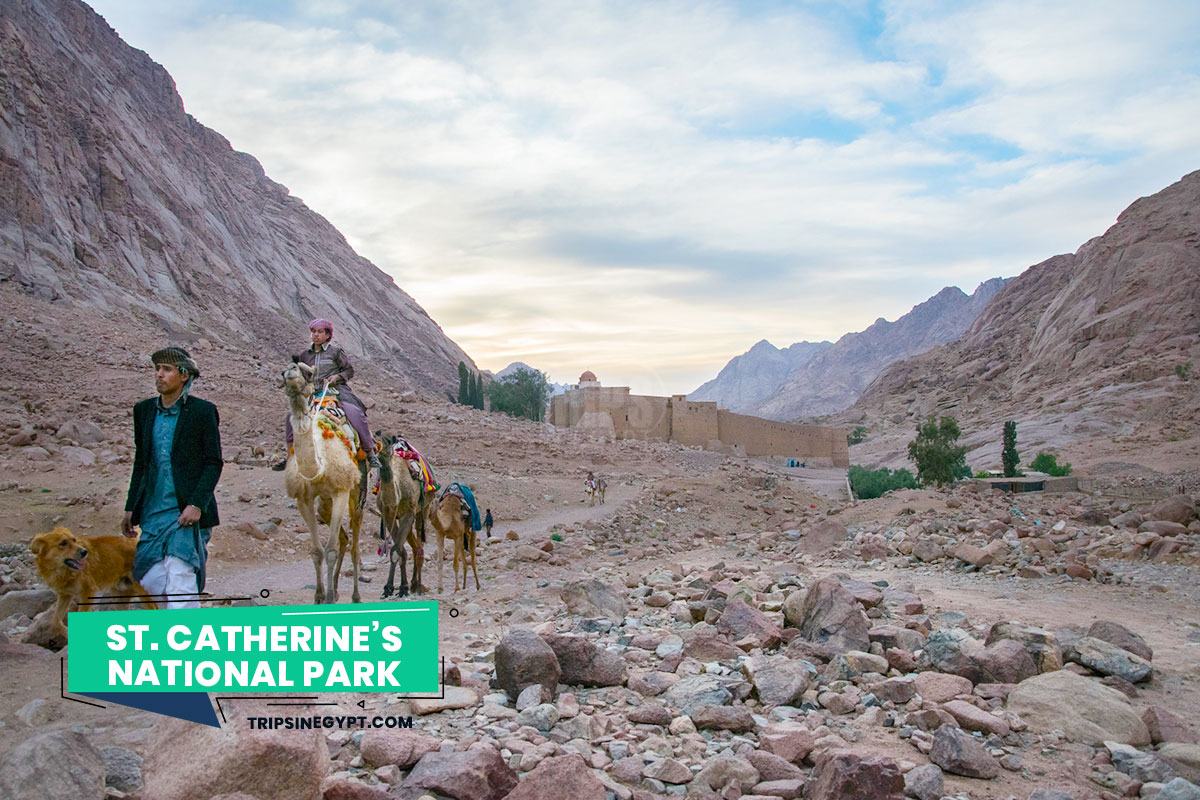
St Catherine’s National Park is a very magical national park in the central southern area of Sinia with a space of 5,750 km2. It was declared a golden natural reserve by the Egyptian Environmental Affairs Agency (EEAA). The area is home to Egypt’s highest mountain tops which include st. Catherine mountain, Serbal mountain, Umm Shomer mountain, Moussa mountain, and Tarbush mountain.
This epic UNESCO world heritage site has an arid mountain ecosystem filled with a rich biodiverse which is filled with magical wild flora and wildlife that is made up of 472 plant species, 27 mammal species, and 46 reptile species which include Geckos, Skinks, Agamids, Hedgehogs, Rodents, Hares, Wild cat, Red fox, Sinai Leopard, the Nubian ibex, Rock hyrax, Dorcas gazelle, and the panther Pardus Jarvis.
The reserve has a number of natural resources which include pastoral plants, medicinal plants, groundwater, wildlife, marble, granite, and building materials plus a number of fruitful trees which are palm trees, olives, figs, and almonds. The entire area has an average temperature of about 30 °C. It offers an incredible chance to enjoy the most entertaining activities such as hiking the blessed high mountains of Egypt in Sinia.
The reserve has a very important chance to enjoy the most marvelous historical tourism. It has great religious value as it is filled with many biblical roads and sites. The unique Bedouin culture will provide the key to learning about the secrets of the western desert. Everyone will enjoy the sight of the rich wildlife and the most magical birdwatching adventure. The entire area is filled with incredible spiritual heritage, a peaceful environment, and many medicinal herbs and plants.

10. Lake Qarun Protected Area
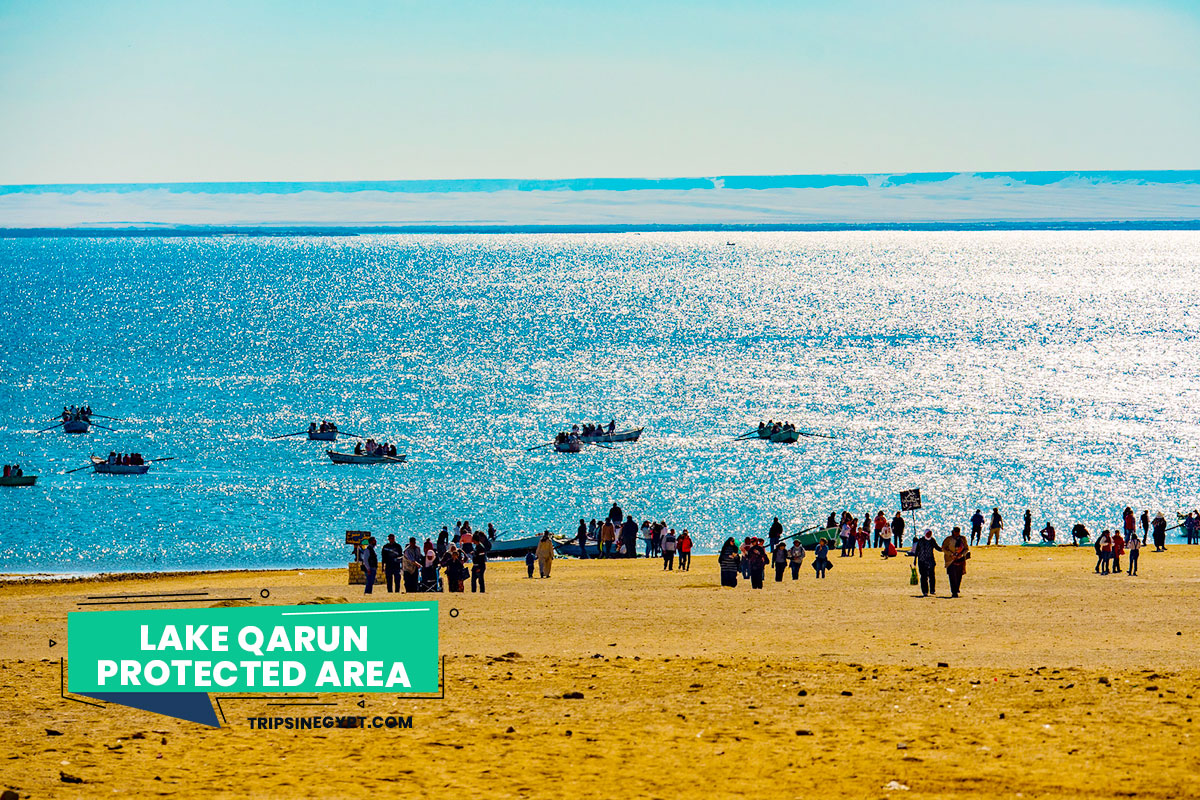
Lake Qarun Protected Area is a magnificent living miracle that has a high existence of marine and terrestrial wildlife plus a rich biodiversity and cultural heritage. This majestic wetland of international importance is located in Egypt's Fayoum Governorate, in the Western Desert, and was made in a reserve in 1983 by the Egyptian Environmental Affairs Agency (EEAA).
The area covers about 1,358 square kilometers which are known to hold the Magnificat lake Qarun one of the oldest natural lakes on the face of the earth that acts as a large saltwater lake that is fed by several smaller lakes and groundwater aquifers in the area. The Lake Qarun Protected Area is famous for its rich biodiversity and is considered one of the most important wetlands in Egypt, it is the home to a variety of bird species, including flamingos, pelicans, and storks plus many species of fish, reptiles, and mammals.
The lake is known to be a vital stopover point for migratory birds, making it a popular destination for birdwatching. Besides its natural significance, the Lake Qarun Protected Area has cultural and historical importance. The area has been inhabited for thousands of years and has numerous archaeological sites, including the remains of ancient settlements and temples plus a number of monkey fossils were discovered which date back more than 40 million years.

11. Wadi El Rayan Natural Reserve
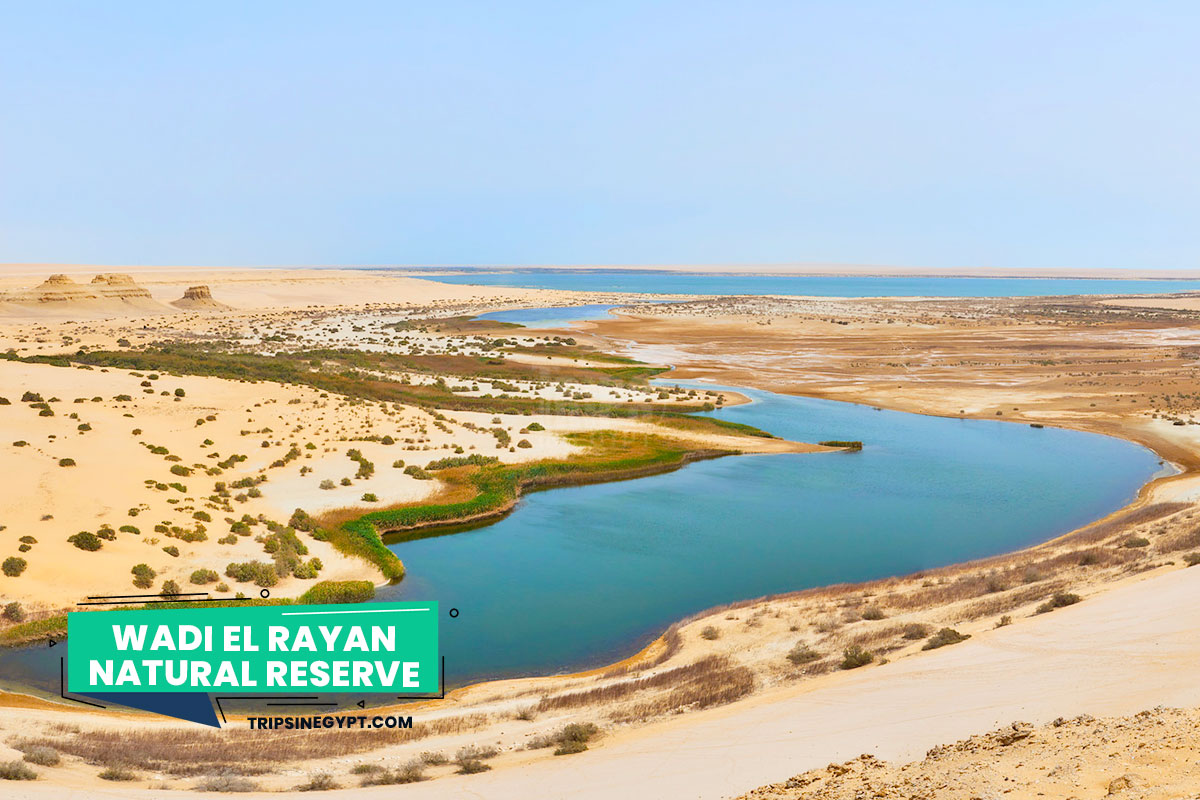
Wadi El Rayan is a miraculous natural bliss located in Faiyum Governorate, Egypt, under the supervision of the Ministry of Environmental Affairs (EEAA). It is named after the two large saltwater lakes located within the protected area, Wadi El Rayan and Wadi El Hitan. The lakes are unique in the desert and attract a wide variety of wildlife, including migratory birds, fish, and plants. The Wadi El Rayan Protected Area was discovered in 1989 to contain the unique natural and cultural resources in the area. It covers an area of 1759 km2 and includes the two lakes, their surrounding wetlands, and the nearby desert. It is 65 km southwest of Faiyum city and 80 km west of the Nile River.
The area is blessed with a number of waterfalls, natural springs, sand dunes plus a number of marine fossils and archeological discoveries. The lakes at Wadi El Rayan are fed by a network of springs and are considered to be among the largest and most important wetlands in Egypt. They support a diverse range of plant and animal species, including 11 species of reptiles, 13 species of perennial plants, 13 species of resident birds, 9 species of mammals, and 26 species of migrant and vagrant birds.

12. Wadi El Alaqi Natural Protected
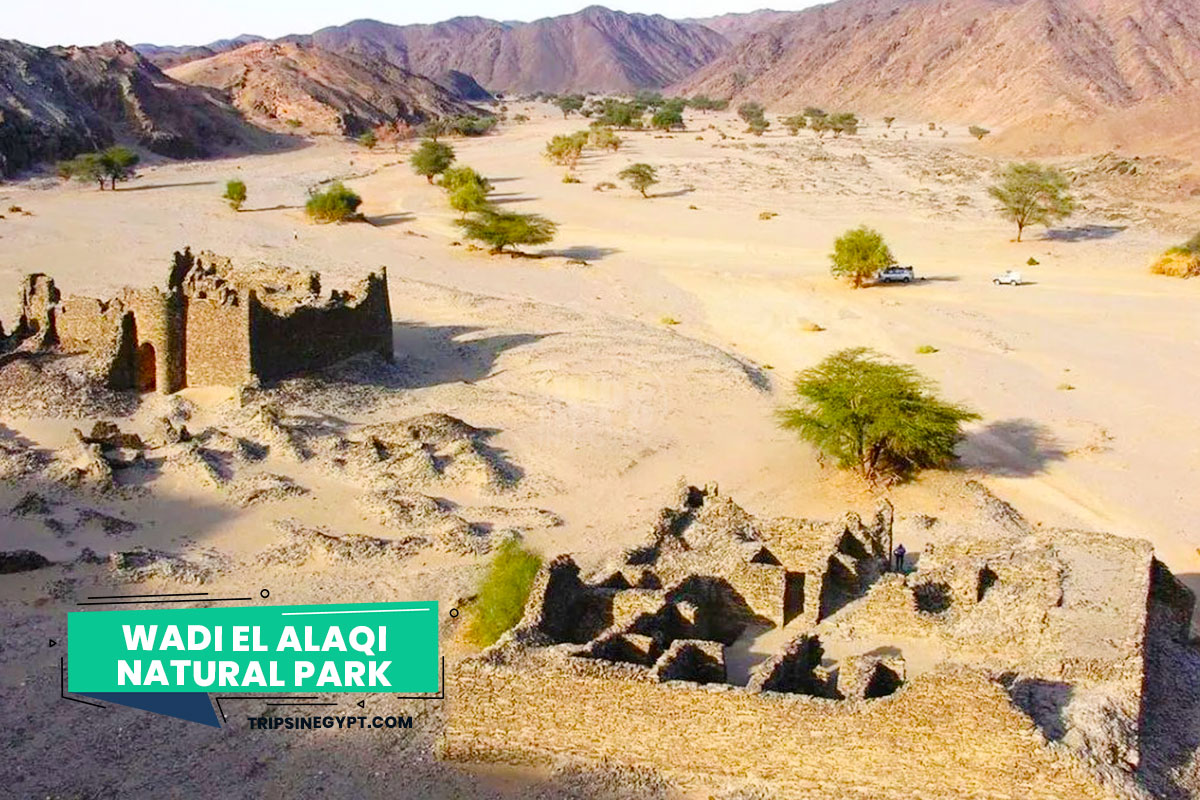
Wadi El Alaqi is a magnificent natural protectorate located in Aswan governorate which covers 30000 square km and it is 180 km away from Aswan. It is a wonderful biosphere loaded with natural wonders as it is filled with 90 species of plants from both annual and perennial categories.
Also, the protectorate has 16 species of birds, 15 species of mammals, a number of reptiles, and a large variety of invertebrates plus medicinal plants. The area is home to a number of nomadic tribes of Bejas. The area has some mining locations for nickel and copper. It was also declared a Biosphere Reserve by UNESCO in 1993.

13. Siwa Oasis Protected Area
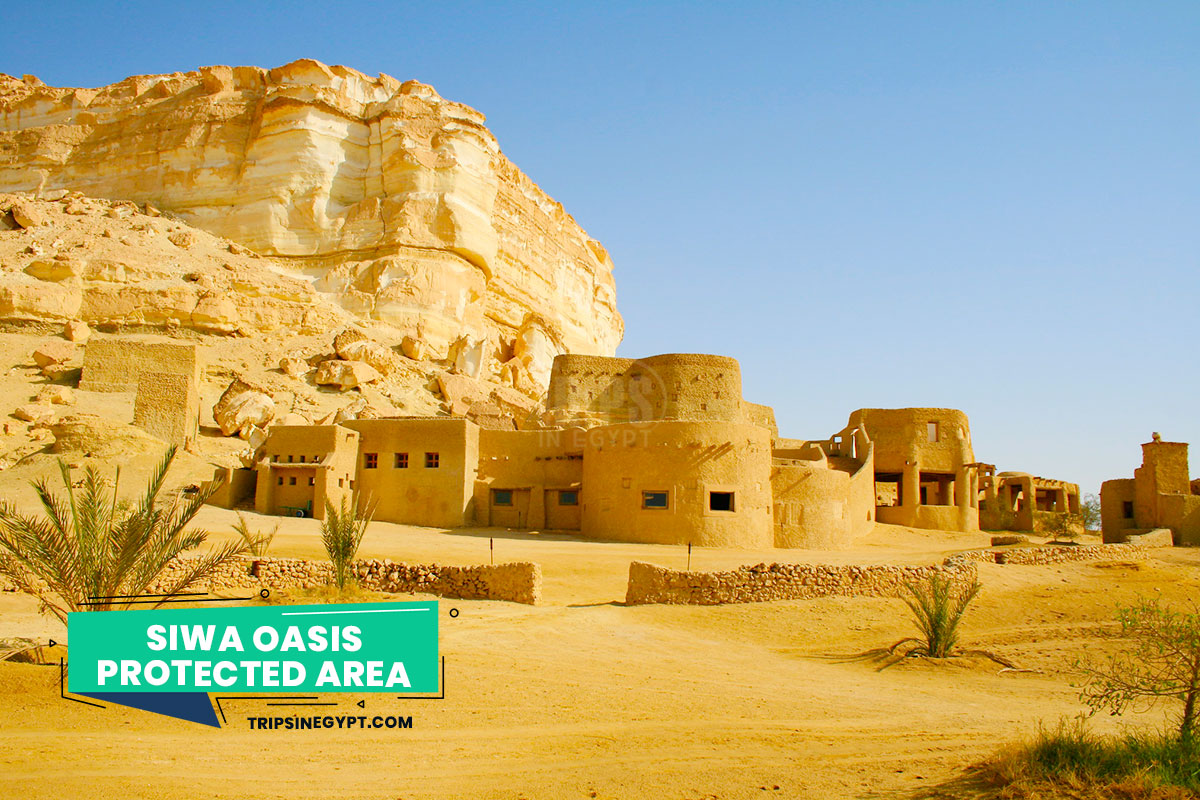
Siwa Oasis is a protected area located in the Western Desert of Egypt, near the border with Libya filled with pure cultural and natural heritage. It covers an area of approximately 33,000 km². This marvel area has a diverse number of ecosystems which includes the town of Siwa plus holds magical surrounding countryside, and blessed natural and cultural resources which include including the Siwan Berber culture, hot springs, salt lakes, and natural springs.
The oasis is also home to various species of plants and animals, including the critically endangered Slender-horned Gazelle and endangered Scimitar-horned Oryx. The local Siwi people have lived in the oasis for thousands of years and continue to practice traditional forms of agriculture and herding. Due to the rich ecological nature and cultural importance of this area, Siwa Oasis has declared a UNESCO Biosphere Reserve in 1979. The protected area is managed by the Egyptian Environmental Affairs Agency and is open to visitors for ecotourism and educational purposes.

14. Wadi El Assiuti Natural Reserve
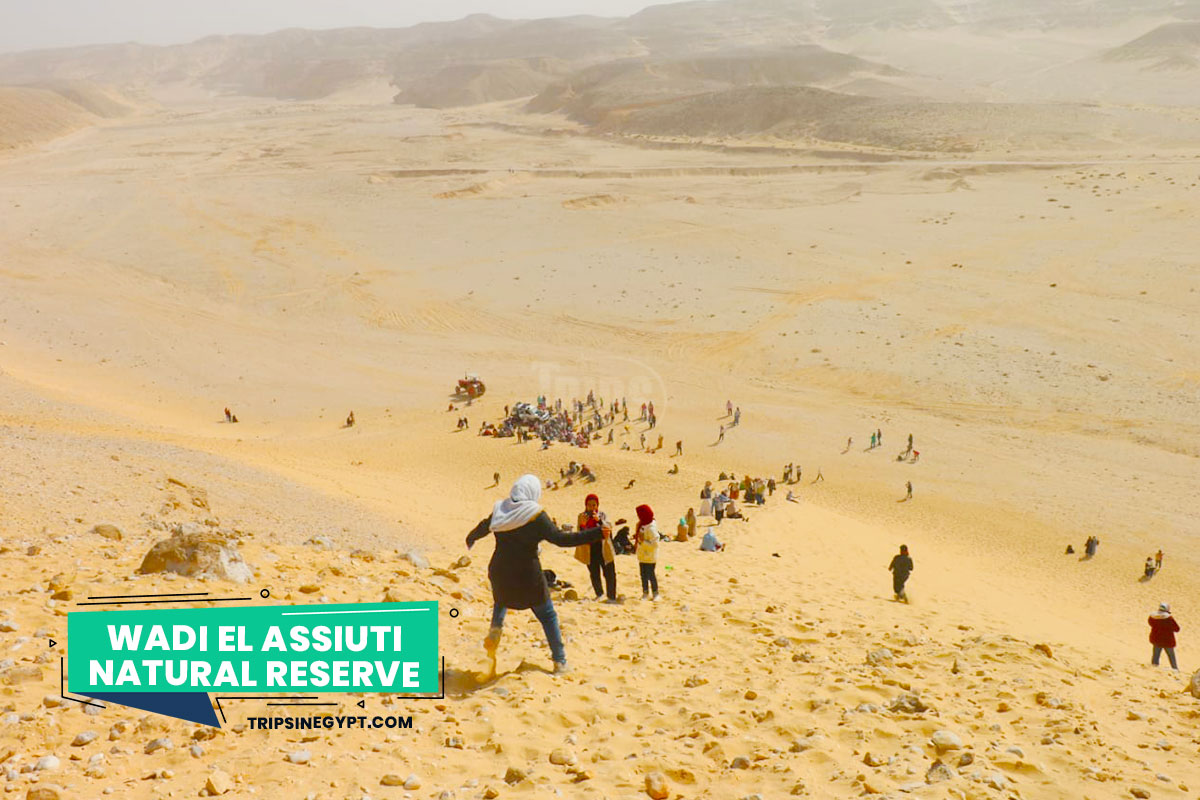
Wadi El Assiuti Protected Area is an amazing natural reserve in Egypt. It is located in the Asyut Governorate, in the Upper Egypt region which has an area of 50, 000 Feddans located about 400 km from Cairo. The area is known for its scenic beauty and diverse wildlife, including various species of birds, reptiles, and mammals which include ostrich, bighorn, mountain goats, Egyptian deer, zebra, and some reptiles.
The reserve serves as an important habitat for migratory birds and has been designated as a Wetland of International Importance under the Ramsar Convention. The Wadi El Assiuti Protected Area is also home to several unique and rare species of plants, as well as several ancient archaeological sites and cultural landmarks. The area is filled with a number of endangered species of fauna and flora plus some agricultural crops.

15. El Hassana Dome Protected Area
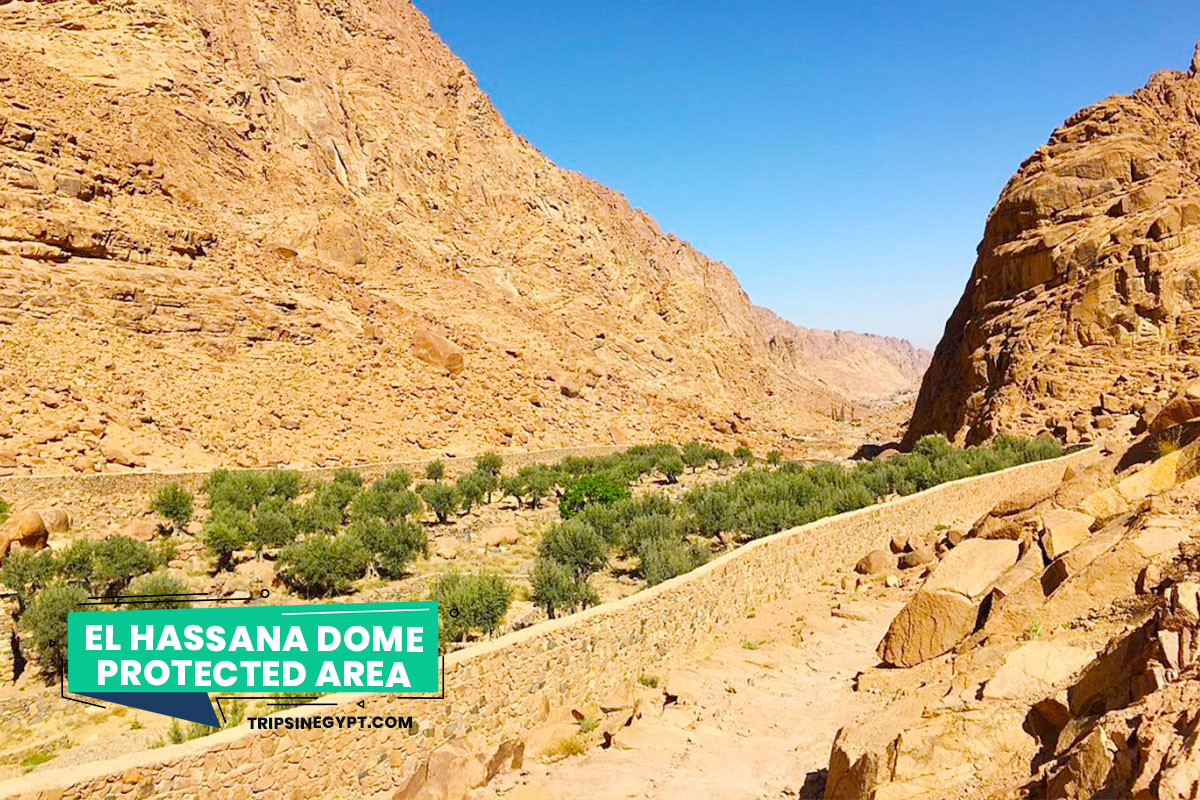
El Hassana Dome protected Area is a nature reserve in the Giza governorate just 23 km away from Cairo in the Abu Rawash area with a space of one square km in the Western Desert region of the country. It is 8 km away from the Giza pyramids and the entire area is divided into two parts by the Cairo-Alexandria desert road. The area is known for its unique geology, including several large dome formations and unique rock formations.
The reserve is home to several species of wildlife, including desert animals such as reptiles and mammals, as well as various bird species. El Hassana Dome Protected Area is of cultural significance, with several ancient rock art sites and archaeological remains found within its borders dated between 40 and 60 million years old. The whole ecosystem of the entire area is known to be a natural museum filled with fossils and geological wonders plus it is able to show the change in the climate across 100 million years.

16. The Petrified Forest Natural Reserve
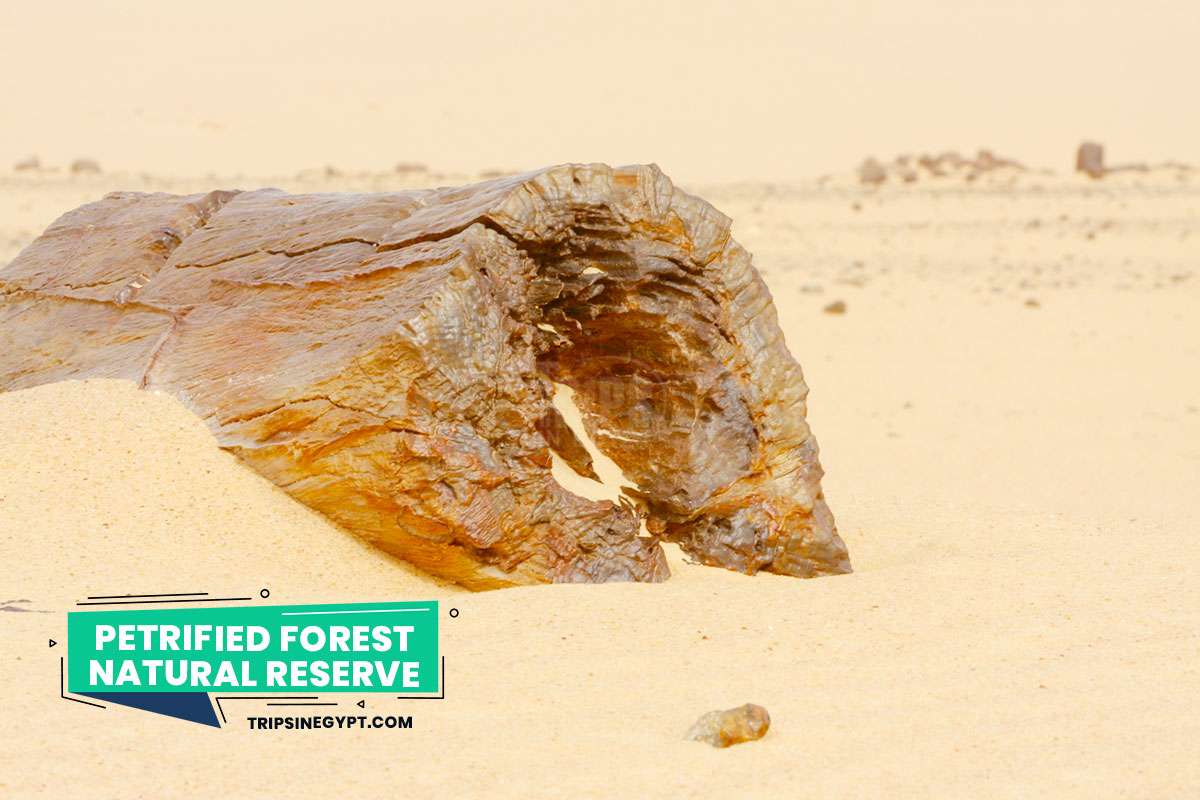
The Petrified Forest Protected Area is a nature reserve in Egypt. It is located about 30 km away from Cairo near Maadi. It only covers an area of 7 square kilometers. The entire area is 35 million years found in the Western Desert region of the country. This natural heritage site is known for its large deposits of petrified wood, which were formed from ancient trees that were fossilized over time. The Petrified Forest Protected Area is home to several unique species of plants and animals that are adapted to the desert environment, as well as several ancient rock art sites and cultural landmarks.
It purified area was declared a natural protectorate in 1989. The area is entirely covered by a high density of bushes, acacia trees, and pastoral plants which increases the water levels in the soil. This golden Wood Hill is a very popular touristic, cultural, and scientific travel destination showcasing many great facts about the history of the world.

17. Sannur Valley Protected Area
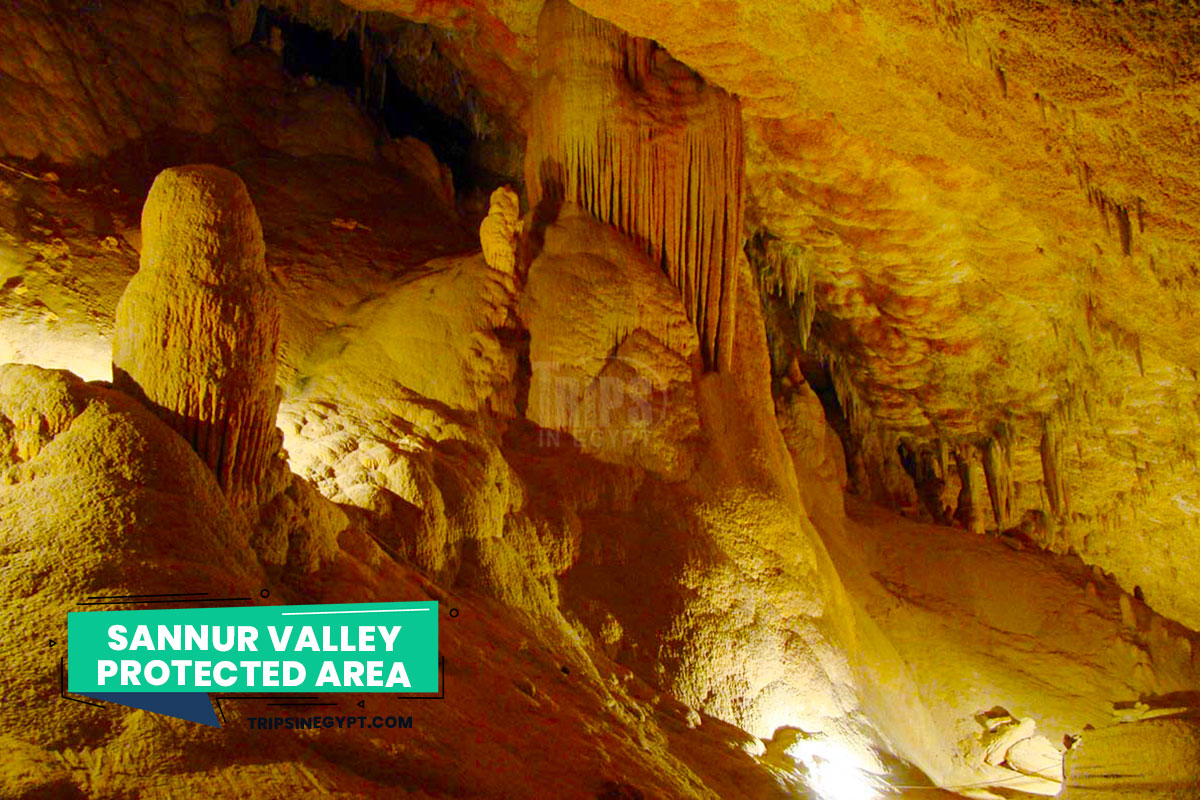
Sannur Cave Protected Area of Egypt is located 10 km southeast of Beni-Suef governorate. The reserve covers an area of approximately 300,000 hectares and extends to about 700 m with a total width and depth of 15 m. It was established in 2002 to be a natural heritage site. The place was utilized as an alabaster, Terra Rossa, and limestone quarry during the time of the Pharaohs.
There are 54 caves found in the core of the earth which are filled with a number of geological formations which are the rarest in the world. It IS home to a diverse range of flora and fauna, including the Nubian ibex, desert hare, and various species of birds.

18. Taba Protected Area
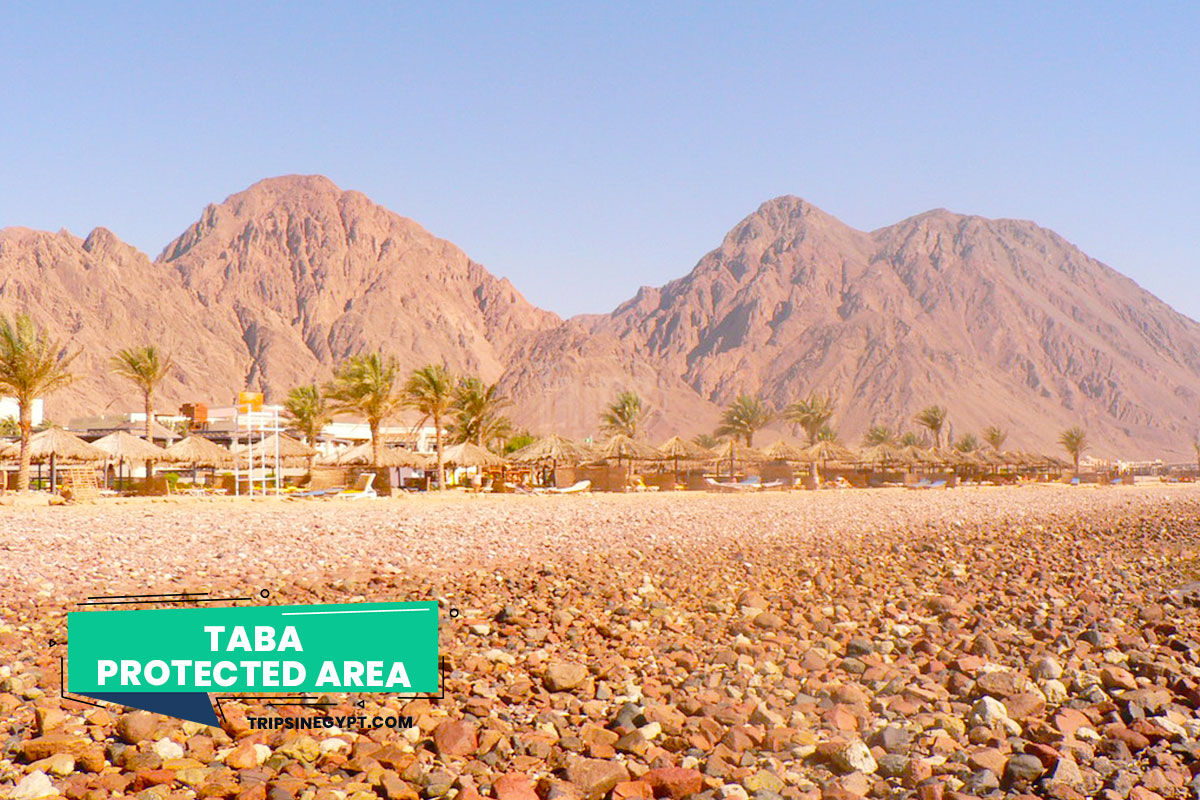
Taba, Egypt Protected Area is a nature reserve located in the Gulf of Aqaba in the Sinai Peninsula. It was established in 1992 to protect the unique landscape, wildlife, and cultural heritage of the area. The reserve covers an area of approximately 120,000 hectares (3590 square kilometers) filled with desert landscapes, caves, mountainous passages wadis, and natural freshwater springs. It is home to a diverse range of flora and fauna that hold 25 types of mammals, and 24 types of reptiles.
As for plants, 50 kinds of rare resident birds such as hyrax, Nubian ibex, wolf, hyena, deer, eagle Bearded vulture, Egyptian vulture, the golden eagle, and 480 kinds of extinct kinds including the Asiatic cheetah, desert hare, and various species of birds. Additionally, the area has several important cultural sites, including ancient fortresses, that provide insight into the history of the region. There are a number of monuments and artifacts that dates back more than 5000 years and some of the traditional Bedouin heritage treasures.

19. Nabq Protected Area
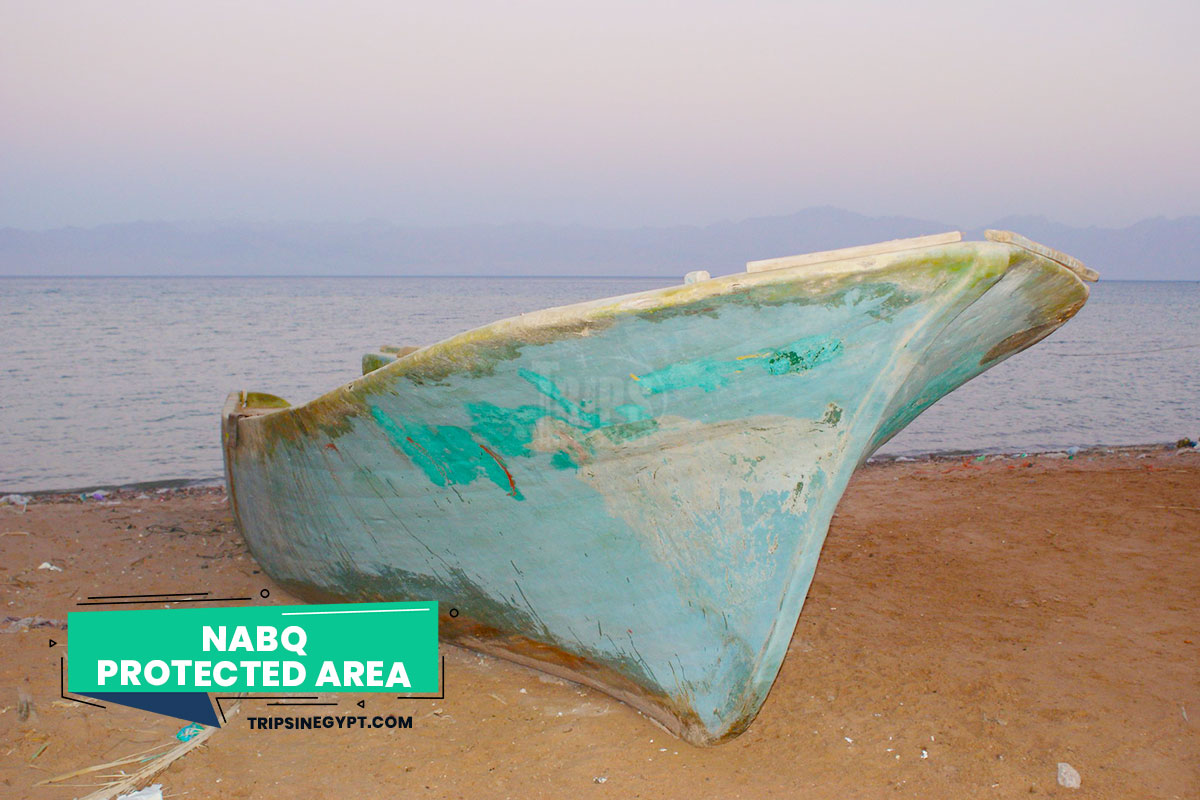
The Nabq Protected Area is a marvelous and priceless location that offers a magical glimpse into the rich biodiversity of the Red Sea region which would explain why it gained popularity between nature lovers and eco-tourists. Nabq Protected Area is a nature reserve located in the Sinai Peninsula of Egypt, on the northeastern coast of the Red Sea. The area was declared in 1992, it covers an area of approximately 1,800 square kilometers and is home to a diverse range of flora and fauna.
The most marvelous natural wonders include mangroves, Acacia trees, and various species of desert vegetation. There are over 130 species of birds which include resident species, migratory birds as well as various species of marine life, colorful fish, coral reefs, and sea turtles. The protected area is also known for its stunning landscapes, including sand dunes, beaches, and the Red Sea coastline.
The natural reserve is home to a number of different ecosystems filled with deserts, valleys, mountains, marine creatures, and many creatures which include 134 species of plants, 208 species of hard coral, 438 species of fishes, and more which would explain why Nabq protected area is considered one of the richest Diving sites in the Red Sea. The essence of the Bedouin culture is located all over the blessed reserve.

20. Abu Gallum Natural Reserve
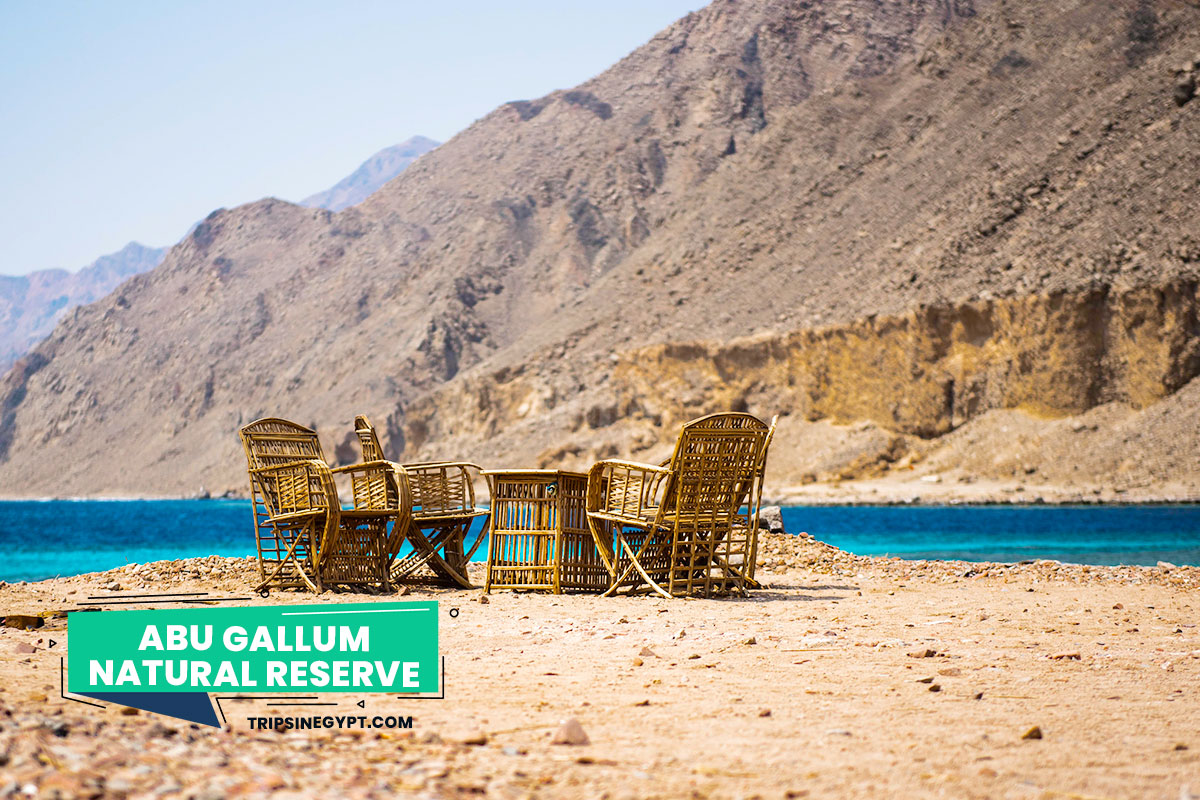
Abu Galum Protected Area is a protected natural reserve located in the northeast of south Sinai near Aqaba gulf. It covers an area of approximately 500 km2 stretching up to Dahab and Nuweiba that features scenic landscapes, including mountains, valleys, and cliffs. The protected area is home to diverse wildlife, including various species of plants, birds, and marine animals. The area is known for its vibrant coral reefs, colorful fish, sea turtles, freshwater springs, narrow sinuous valleys, coastal sand dunes, and more. Abu Galum Protected Area is famous for its miraculous geography which is filled with rugged mountains and deep valleys that provide unique habitats for various plant and animal species.
The area is considered an important site for conservation and scientific research due to its unique ecology and biodiversity. The area holds 167 plant species and 44 of these species can only be found in this magnificent area. Nubian Ibex, Hyrax, Red Fox, Striped Hyena, the Black Cobra, Horned Viper, and Burton's Carpet Viper are some of the most incredible animals found in this lovely place. Abu Galum Protected Area offers a wide range of activities that include snorkeling, diving, and hiking.

21. Lake Burullus Protected Area
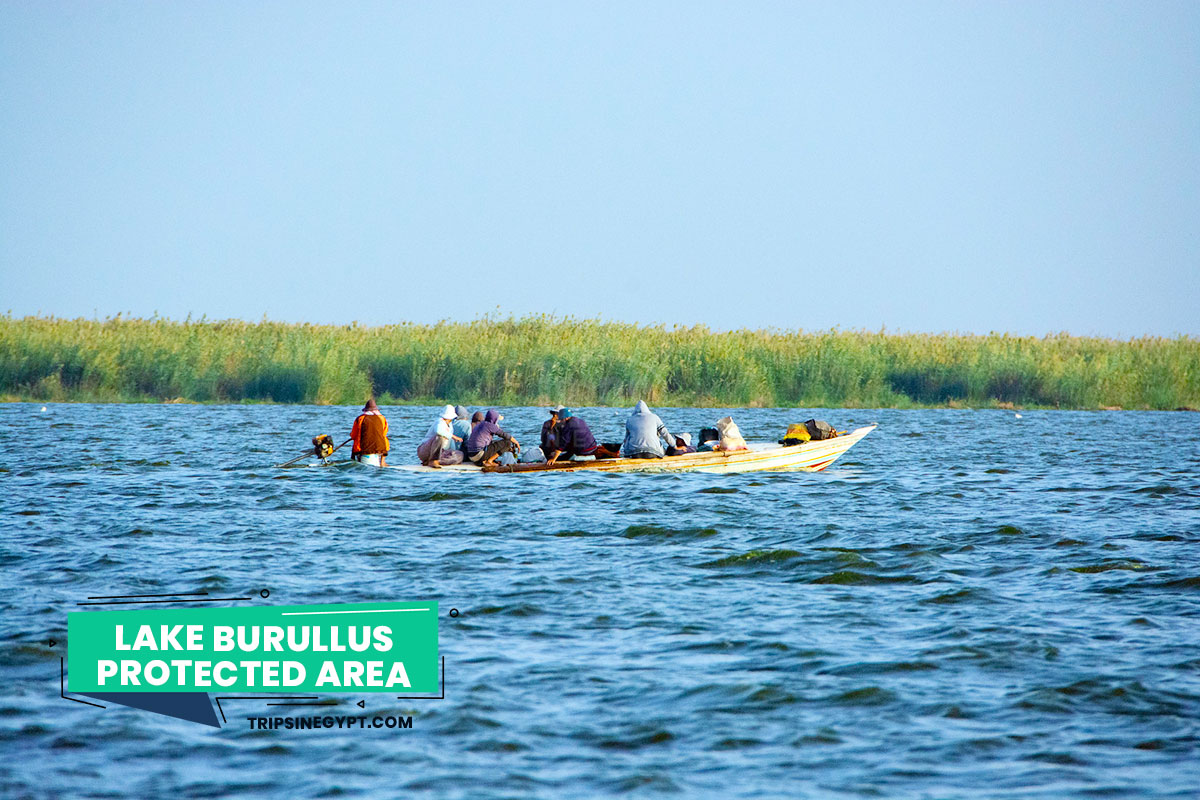
Lake Burullus is a marvelous protected area in the Nile Delta of Egypt found on the northern coast on the east of Alexandria. It covers an area of approximately 42,500 hectares (460 square kilometers) which is 10 km in length and 10 km in width and is considered to be one of the largest freshwater lakes in the country.
The area is recognized as an important site for migratory birds and is home to 135 species of land and water plants, and over 200 species of birds, including many endangered species. The lake is also known for its unique ecosystem, which includes a variety of fish, reptiles, and mammals, as well as various types of plant life.

22. The White Desert Protected Area
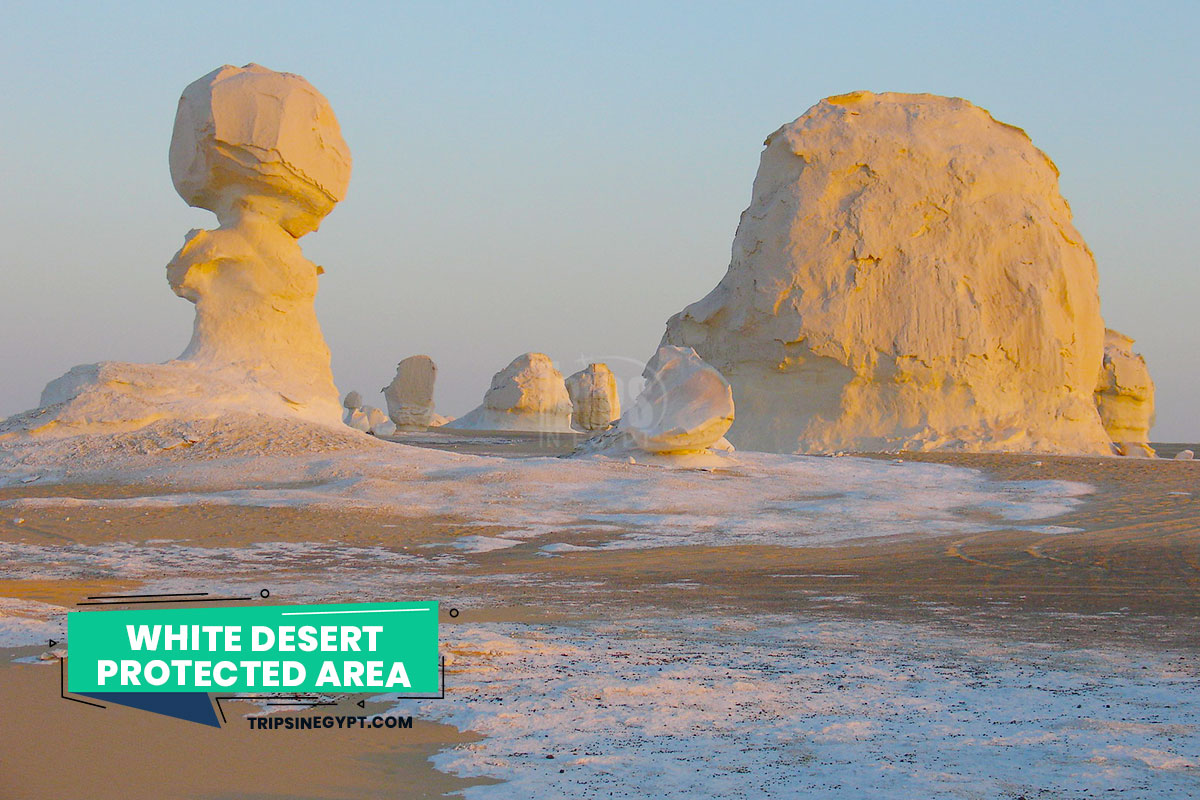
The White Desert is a protected area located in the Western Desert of Egypt, near the Bahariya Oasis 570 km (350 mi) southwest of Cairo. This national park covers an area of 3,010 km2 (1,160 sq mi) and is renowned for its unique landscapes and geological formations. The area is found in the Farafra depression just 45 km (28 mi) north of Qsar El Farafra town.
Some of the finest rock formations which include unique white chalk rock formations, magnificent landscapes, a number of incredible paleontological treasures in the shape of fossils of ancient marine creatures, many species of animals and plants adapted to the desert environment such as desert hares, hyenas, and various species of birds. the endangered Rhim gazelle, red and fennec foxes, Dorcas gazelle, jackals, Barbary sheep, Rüppell's, and the sand cat.

23. Black Desert Reserve
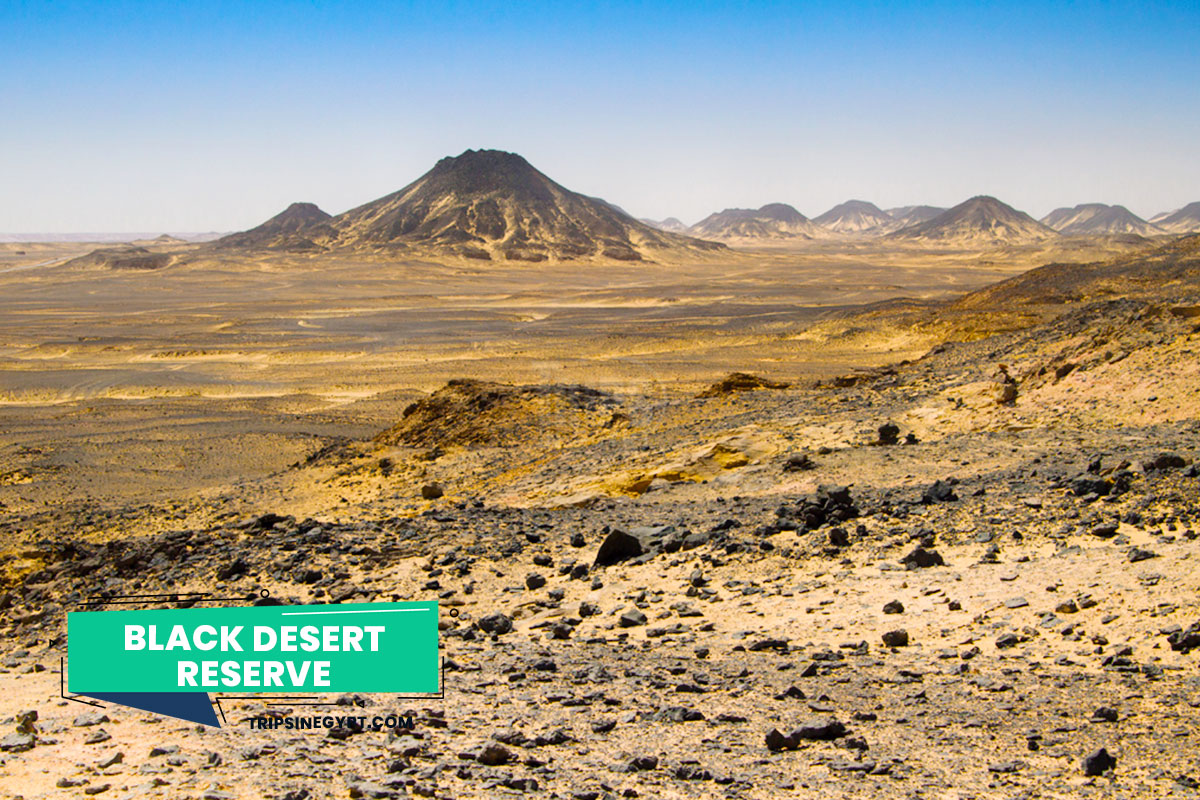
The Black Desert is a marvelous wonder that expands 30 km across the western part of Egypt between the white desert and the Bahariya Oasis. It is characterized by its dark-colored volcanic rocks and lack of vegetation. All the mounds are topped with basalt sills. This desert is located near the Red Sea coast and covers a large area of Egypt's eastern desert region.
The Black Desert is known for its unique geological formations and is home to several important mineral deposits, including gold, copper, and iron. Despite its barren appearance, the area is rich in wildlife, including several species of reptiles and mammals, as well as a variety of bird species. The Black Desert is filled with incredible dark volcanic dolerite which goes back to the Jurassic period across 180 million years ago.

24. Lake Moeris Protected Area
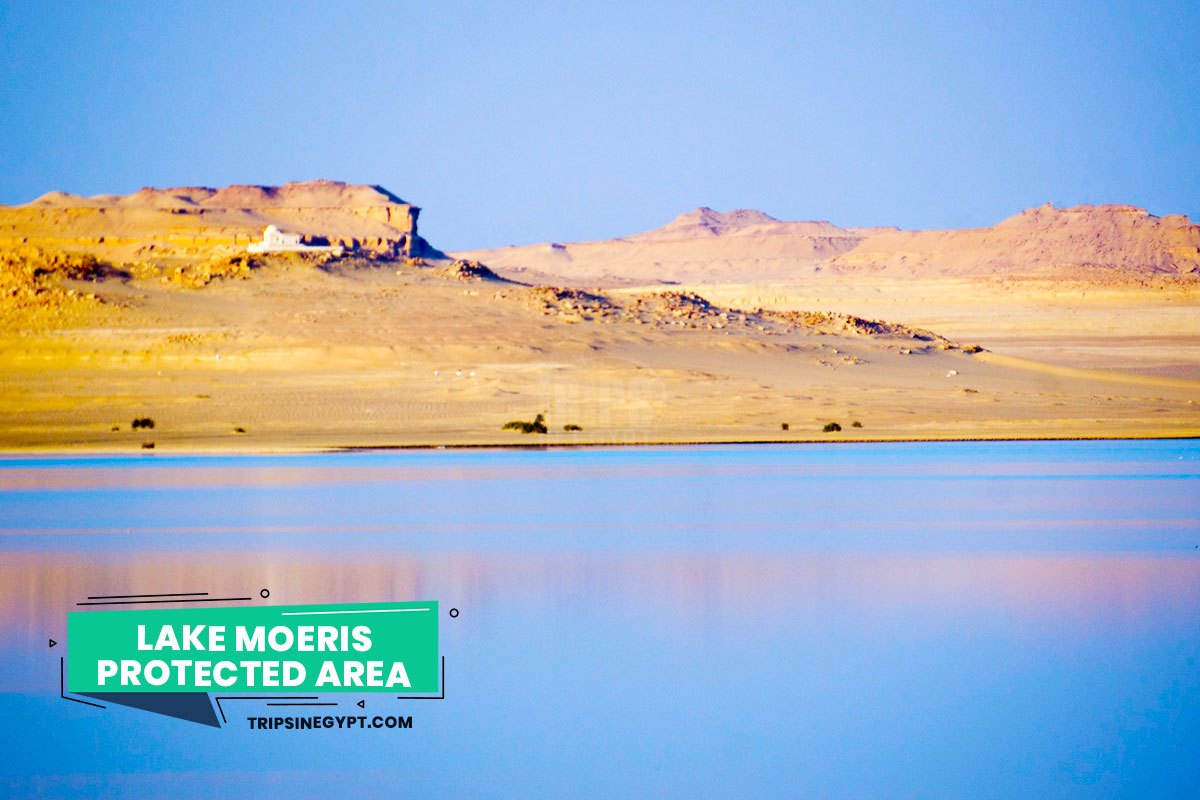
The magical lake Moeris is a marvelous wonder which is located in the northwest part of Faiyum Oasis just 80 km (50 mi) southwest of Cairo. It is a marvelous freshwater lake that has an area between 1,270 km2 (490 sq mi) and 1,700 km2 (660 sq mi). The lake has a very rich history dating all the way to the ancient Egyptians in the middle kingdom (2030 - 1650 B.C).
The name of the lake date to Pharaoh Moeris of the 12th dynasty (1938 – 1756 BCE). A prehistoric mammal Moeritherium was discovered across the area and the waters of the lake are home pf tilapia fish and other kinds.

Conclusion
National parks in Egypt are home to the most heavenly natural wonders ever created on the face of the earth which can be explored through our incredible Egypt tours and Nile cruises where everyone will gain a new sense of tranquility and amazement. Discovering these untouched heavens will feel like a quest of dreams loaded with the magnificent scenery of the most magnificent ecosystems ever made in existence that are filled with creatures and plants that look like they came from a fairytale.
Great vacation for 4 days in Cairo Egypt accompanied by an e...
Duration
4 Days / 3 Nights
Availability
Everyday
An Incredible 5 days Cairo & Alexandria tour package to expl...
Duration
5 Days / 4 Nights
Availability
Everyday
Explore Egypt's ancient wonders on a 6 days vacation to Cair...
Duration
6 Days / 5 Nights
Availability
Everyday
Breathtaking 7 days Cairo, Luxor & Hurghada holiday to explo...
Duration
7 Days / 6 Nights
Availability
Everyday
FAQ
What Should I Wear While Being in Egypt?
You should wear whatever you want. It is advised to wear something light from cotton or linen, comfortable and put on sunblock during your time in Egypt in the summer and wear comfortable footwear like a closed-toe shoe to sustain the sandy terrain.
What to Pack for Your Egypt Tour?
You should bring a brimmed hat and sunglasses if you not used to the Egyptian sun &pack everything you could ever need and put in a small bag so you could move easily between your destinations.
Are All Nile Cruises Available at Any Time?
Yes, it is available all years. as the Nile from Aswan to Luxor takes three to four days of sailing on Monday, Wednesday and Friday for the total cost of 600$ and the Nile cruise from Luxor to Aswan take four to five days in Saturday, Monday and Thursday for the coast of 650$.
Why book Trips in Egypt?
We have experience in vacation planning for more than 10 years & our staff consists of the most professional operators, guides and drivers who dedicate all of their time & effort create the perfect vacation. All of our tours are customized by Travel, Financial & Time advisors to fit your every possible need during your time in egypt. we always keep in mind that your safety & comfort are our main priority until you return home.
Is it safe to travel to Egypt?
Yes, it is absolutely safe to travel to egypt, You will feel secure in Egypt as the current atmosphere of the country is very peaceful after the government took powerful measures like restructuring the entire tourist police to include all the important and tourist attractions in Egypt and construct an entire environment dedicated for ensuring the lives of all tourists.
What are Egypt's Visa Requirements?
They are very simples, If you want to apply for a Visa On Arrival that lasts for 30 days then you should be one of the eligible countries(check the link), have a valid passport with at least 6 months remaining and pay 25$ USD entry fee in cash. As for the E-Visa for 30 days, you should have a valid passport for at least 8 months, complete the online application, pay the e-visa fee then print the e-visa to later be presented to the airport border guard. You could be one of the countries eligible for a free visa for 90 days.
What is the Weather is Like?
The temperature of Egypt ranges from 37c to 14 c, Summer in Egypt is somehow hot and winter is cool and mild but sometimes it becomes cold at night. The average of low temperatures vary from 9.5 ¡ÆC in the wintertime to 23 ¡ÆC in the summertime and average high temperatures vary from 17 ¡ÆC in the wintertime to 32 ¡ÆC in the summertime while the temperature is moderate all along the coasts.
What is the Best Time of Visit Egypt?
It is known the best time to travel to Egypt is in the winter from September to April as the climate becomes a bit tropical, a warm atmosphere with a winter breeze. You will also be notified a week before your trip if the weather is unsafe or if any changes have been made.
Should I Give Tips in Egypt?
It is totally up to you, but if you choose to you can tip the servers at your restaurant 5-10% by handing it to them directly and 5 Egyptian Pounds as a general tip of anyone.
Can I Enter the Pyramids?
Yes, you can enter the pyramids for the small fee of 20$.
How to Enjoy Egypt During Ramadan?
Ramadan is a special time of year for Muslims that should be celebrated by non-Muslims and feel the essence of the Islamic culture. You can fast with the Muslim or just observe but you are always welcome to join the celebrations and festivals.

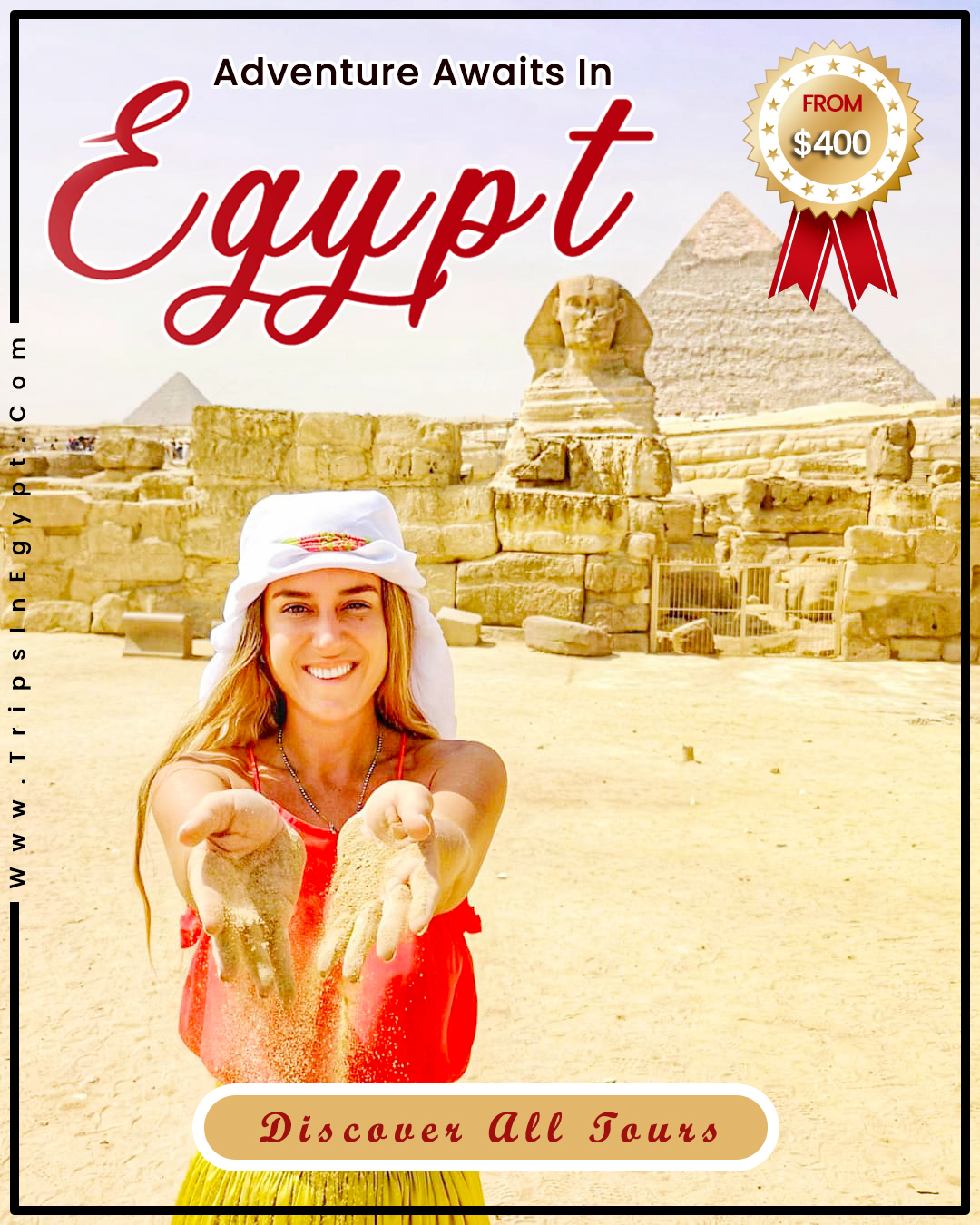
Share Your Comment